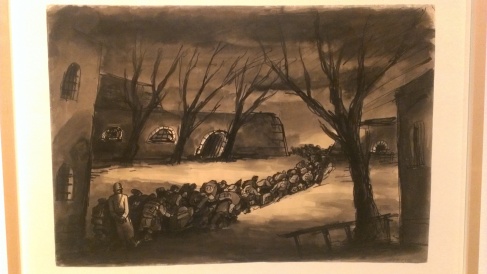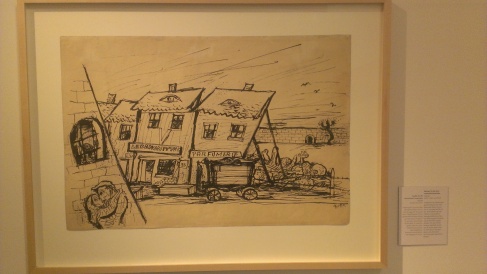Today is the fifth day since we have been here Berlin. Time goes so fast that half of the trip has been passed. Fortunately, the places we have been were very impressive and awesome. So did today.
The first place in the schedule was the St. Nicholas’ Church, which was the oldest church in Berlin with 800-year history. Originally, it was a Catholic church. After Protestant Reformation, it became a Lutheranism Church. There were two things surprised me a lot. First of all, people then chose to bury the body under the church but not in the graveyard. In my mind, that means people did the service and have lunch every Sunday just beyond the tomb. That is impossible in my culture, because the died man should be far away to the family. However, on the opposite way, people thought buried under the church was a kind of connection with god, and people believed that the died people will protected the families who still alive. Anyway, the decoration embossments were really beautiful. Secondly, the face expression of the angel sculptures were not so kind. They located in the middle of the exhibition and could be seen face to face. This was the first time that I could observe the religion sculptures so closely. But the impressions that the sculptures left me were totally different from my understanding before. In my imagination, all the angels should looks nice and peaceful, but most of those angels seems more ironic and out of patience, or serious even a little bit angry. Only one of them seems filled of love. It confused me a lot. Besides, it is also the first time for me to see so huge an organ. The sound must be beautiful as well.

The next museum we visited was about the artist Shadow, who was also the designer of the Brandenburger Gate. In the exhibition, there were plenty of his works. Some of them were painting, and some of them were sculptures. All of them were amazing. I surprised by his precise proportion design of the human arts, which made the productions really authentic.
On the way to the Museum Island, we passed by some statues on the center of the plaza. Every characters were vivid as it really existed.The pity is that I could not understand more a bout the origins and the stories of those statues, but they definitely were good arts which were worthy to see.
By the way, there was a man who sale the curries on the street was interesting. Without any store, just a equipment and himself were enough to start a business. Such a Germany style. Saving space, saving time, and making everything most efficient.

The last Museum we visited was the Pergamon Museum. As the most famous museum in Berlin, it was as great as its popularity. It showed the Pergamon Altar, Market Gate of Miletus, the Ishtar Gate and the Processional Way in Babylon, and the Mshatta Facade. I lovethis museum is because it shows the original roof of the western culture, which is unfamiliar with me. That is also the most interesting and curious things for me. Thanks for the Chinese explanation, I did
The last stop of our trip yesterday was the German Bundestag. Standing on the top of the building, the Berlin just in eyes. The building top sculptures were so close to you. Standing under the Germany flag, somehow the solemn feeling came out. and Walking around the top of the globe, with the guidance we can see the famous building around the Berlin. The design of this building was brilliant as well. Not only the function to the office building, but also the appearance for sightseeing are marvelous. In the first layer of the globe, we also saw the exhibition of the Berlin government history and development of his building. Glad to be here and have this tour.
























